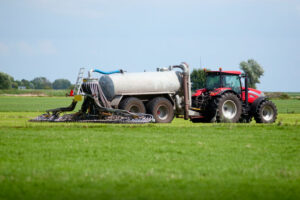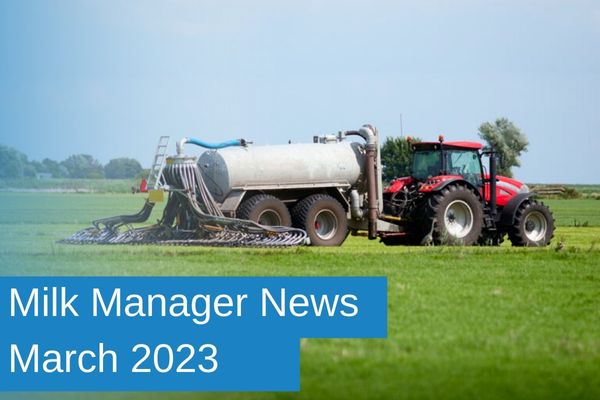Milk Manager News March 2023 – Can You Afford Luxury Uptake?
10 March 2023As the days lengthen and grass growth starts to increase, many are looking forward to turnout. With this in mind, it is worth looking at the role of potassium (Potash or K) on plant and animal health.
In grass, K is required to develop and maintain the strength and structure of the plant by maintaining water balance in the cells. Potassium also plays a role in sugar formulation, assists root development and is involved in the transport of metabolites and nutrients within the plant.
If there is a deficiency of K, older leaves will turn brown and die off. Though direct impact of K deficiency is only rarely observed, it appears to play an important role in tolerance of heat, drought and, more importantly in this part of the world, cold. Potassium also has an effect on nitrogen use efficiency. So, if your K isn’t right, you will not be making best use of N. Although fertiliser prices are now dropping, there are few that can afford to throw money away.
The lower soil pH is, the harder it is for K molecules to adhere to soil particles. This means that they will be more prone to leaching.
Too much K also has its problems. The first thing that comes to mind for most is the interaction with magnesium in the gut and the milk fever risk this poses to transition cows. Many now take silage for dry cows from fields that have not received any K fertiliser or slurry.
Rapid spring grass growth and an abundance of K can lead to plants taking in more than they need. This is known as luxury uptake. The uptake of extra K means that the plant can’t absorb as much magnesium, leading to lower magnesium uptake by grazing stock. This can cause grass staggers, but the risk can be reduced by applying K fertiliser later in the season. However, a high magnesium mineral should always be given to stock two to three weeks before grazing as a precaution.
At a soil level, excessive K can cause clay particles to disperse and clog pore space. This can lead to reduced water infiltration and waterlogged soils. Soil structure in areas receiving more slurry than they need can be hit with the double whammy of a very high K status not letting water away, as well as compaction from heavy traffic.
To get K soil status just right, offtake has to be matched with input, taking account of soil reserves.
The only way to do this properly is to soil sample regularly. This does away with any assumptions about your soils and lets you see exactly what each field needs. There is currently funding available towards soil sampling under Preparing for Sustainable Farming (PSF), the first part of the National Test Program https://www.ruralpayments.org/topics/all-schemes/preparing-for-sustainable-farming–psf-/
Once you have these results, a nutrient budget can be prepared. To increase the accuracy of this budget, slurry should also be analysed. Standard figures cannot be expected to reflect exact conditions on farm. Samples can be sent away for lab analysis and some contractors are now using real-time slurry analysis equipment that can give the nutrient content of slurry as it is being spread.
There is also financial assistance available towards nutrient budgeting in the form of Specialist Advice from the Farm Advisory Service https://www.fas.scot/specialist-advice/
alasdair.scott@sac.co.uk; 01555 662562
Sign up to the FAS newsletter
Receive updates on news, events and publications from Scotland’s Farm Advisory Service


